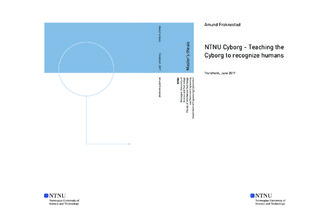| dc.description.abstract | Background - Several types of depth cameras exist, utilizing different principles. The camera on the cyborg, a Stereolabs ZED, uses the embedded stereo method which is mechanically simple but computationally expensive. It is connected to a NVidia Jetson TX1 development board, which works well but somewhat limits performance. There also exists several function on the cyborg which should be taken into account when creating new algorithms.
Method - Two separate methods of human recognition are presented, and some work is done in implementing the selected method. Some practical preparations were also necessary, as system requirements are found and relevant functionality of the Stereolabs SDK is learned.
Results - The randomized decision forest method was deemed as currently not being usable, in spite of several advantages. The drawbacks are too noticeable, and so the region growing and SVM method is deemed preferable. While a basis for further work is made, implementation of the method is not finished.
Conclusion - This thesis presents interesting methods for human recognition, as well as an overview of practical tasks that needed to be completed to facilitate implementation of the chosen method. Both methods | |

